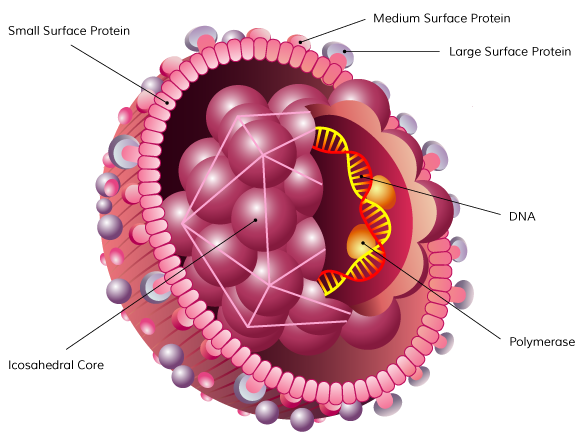Viral Hepatitis – a triggering event for liver disease
Viral hepatitis may be linked to one or more viruses including hepatitis A, B, C, D, or E. Hepatitis B virus (HBV) is one of many hepatitis viruses that selectively infect human liver cells and can establish persistent infections under certain conditions. Chronic infections, especially by HBV, HCV, and HDV, cause progressive liver inflammation, fibrosis, cirrhosis, and cancer. Collectively, these infections represent one of the 3 major triggers of progressive liver disease (NAFLD/NASH and alcohol being the others).
An HBV vaccine is available that, if administered prior to HBV infection, assists the body in neutralizing the virus and blocking infection. However, vaccination is not efficacious for people who are already infected with HBV, and the vaccine has not been historically available to everyone. As a result, an estimated 240 million people worldwide have chronic HBV infection. Anti-HBV medications are used widely by chronically infected individuals but usually are only effective in decreasing viral replication and viremia (virus in the blood), and NOT in eradicating HBV from the liver. This is because HBV, unlike HCV, has evolved clever ways of persisting in liver cells and evading the immune system. Thus, despite vaccines and anti-viral medications, chronic HBV infection remains a huge global health problem. Chronic HBV infection is the leading cause of hepatocellular carcinoma, which kills around 350,000 people per year. A similar number of people die each year from cirrhosis and other complications arising from HBV.
Hepatitis B Virus

